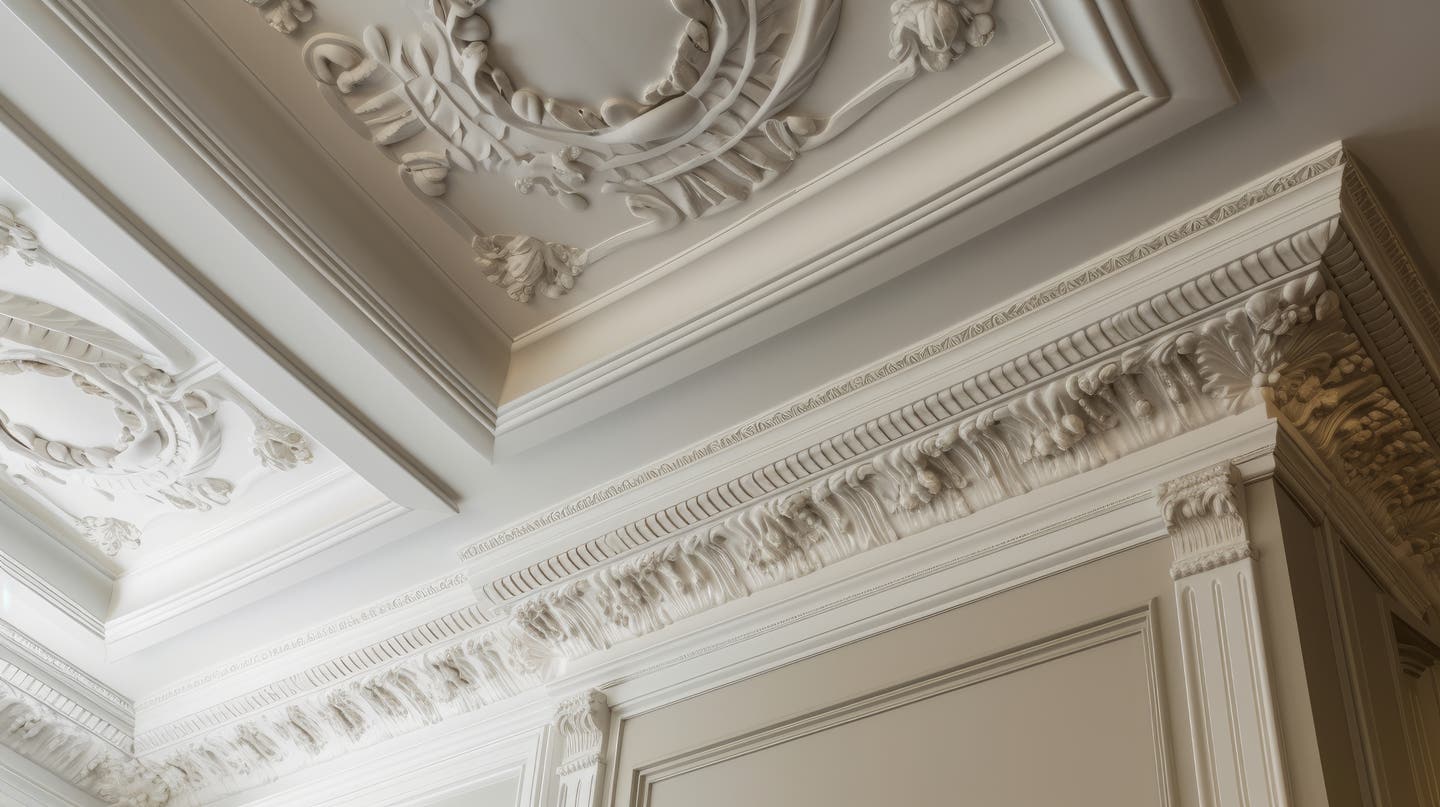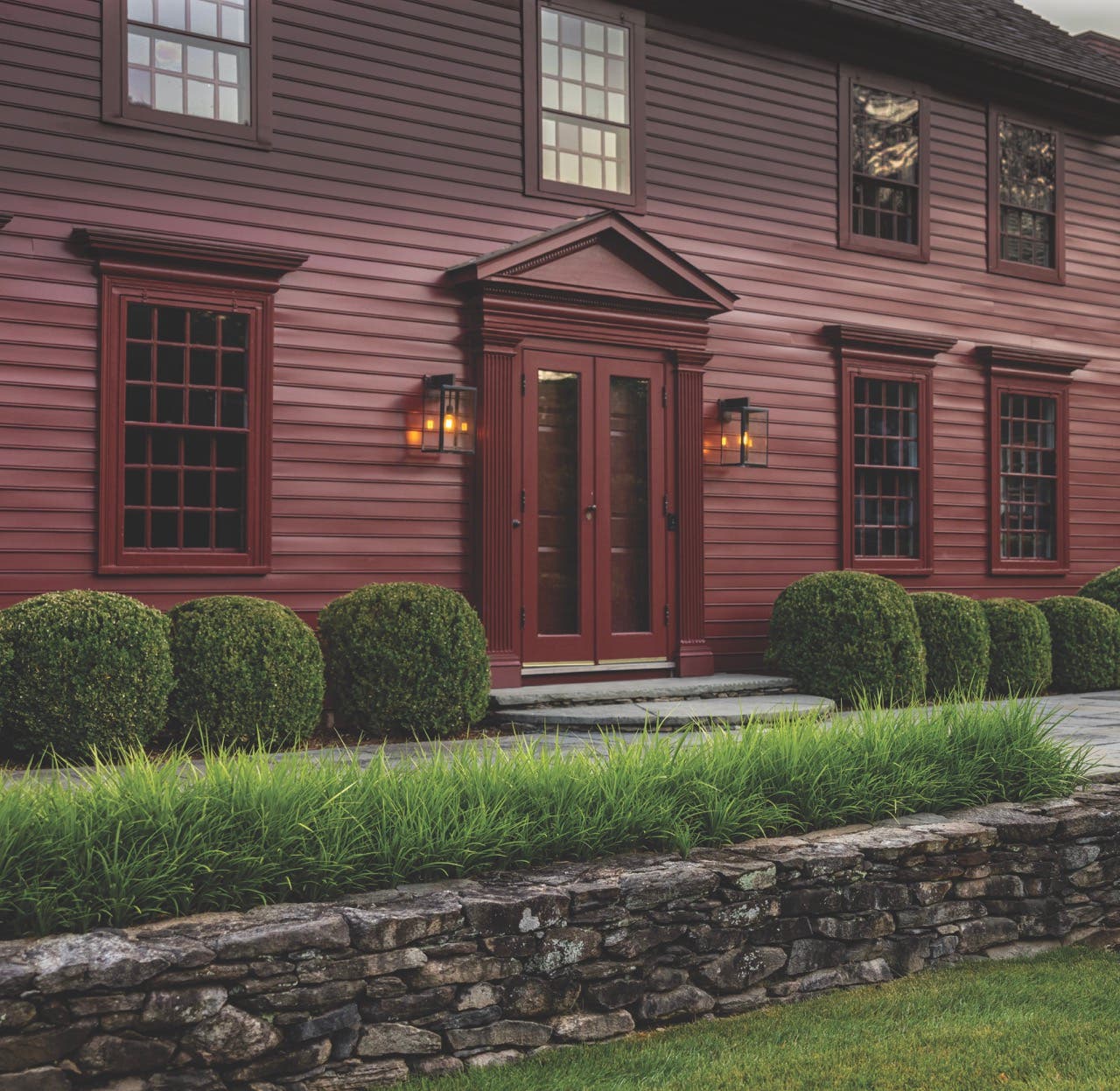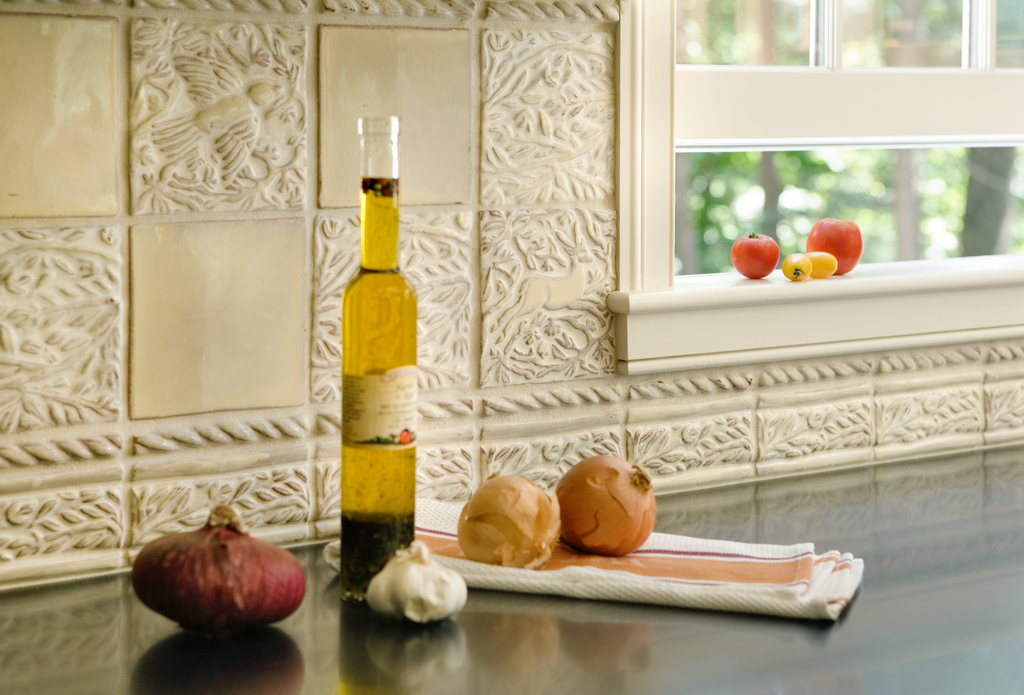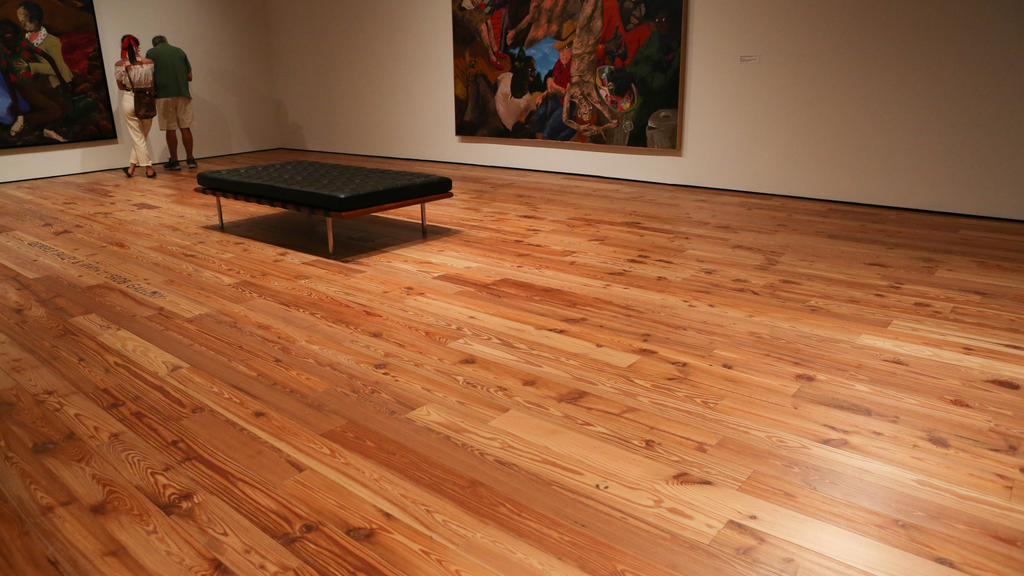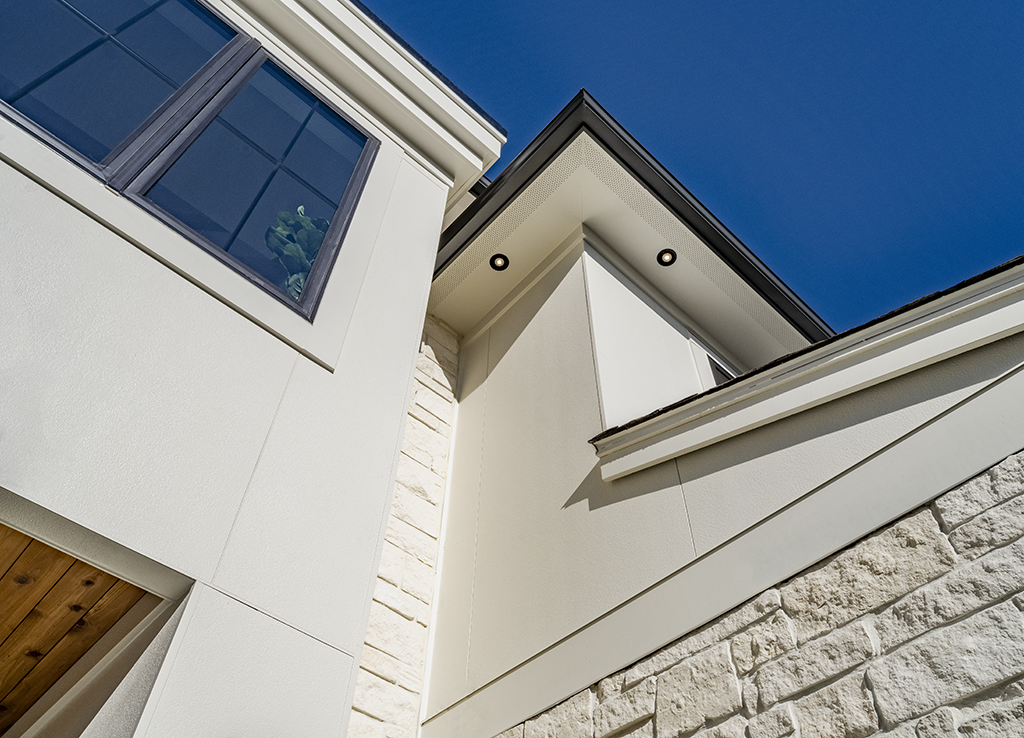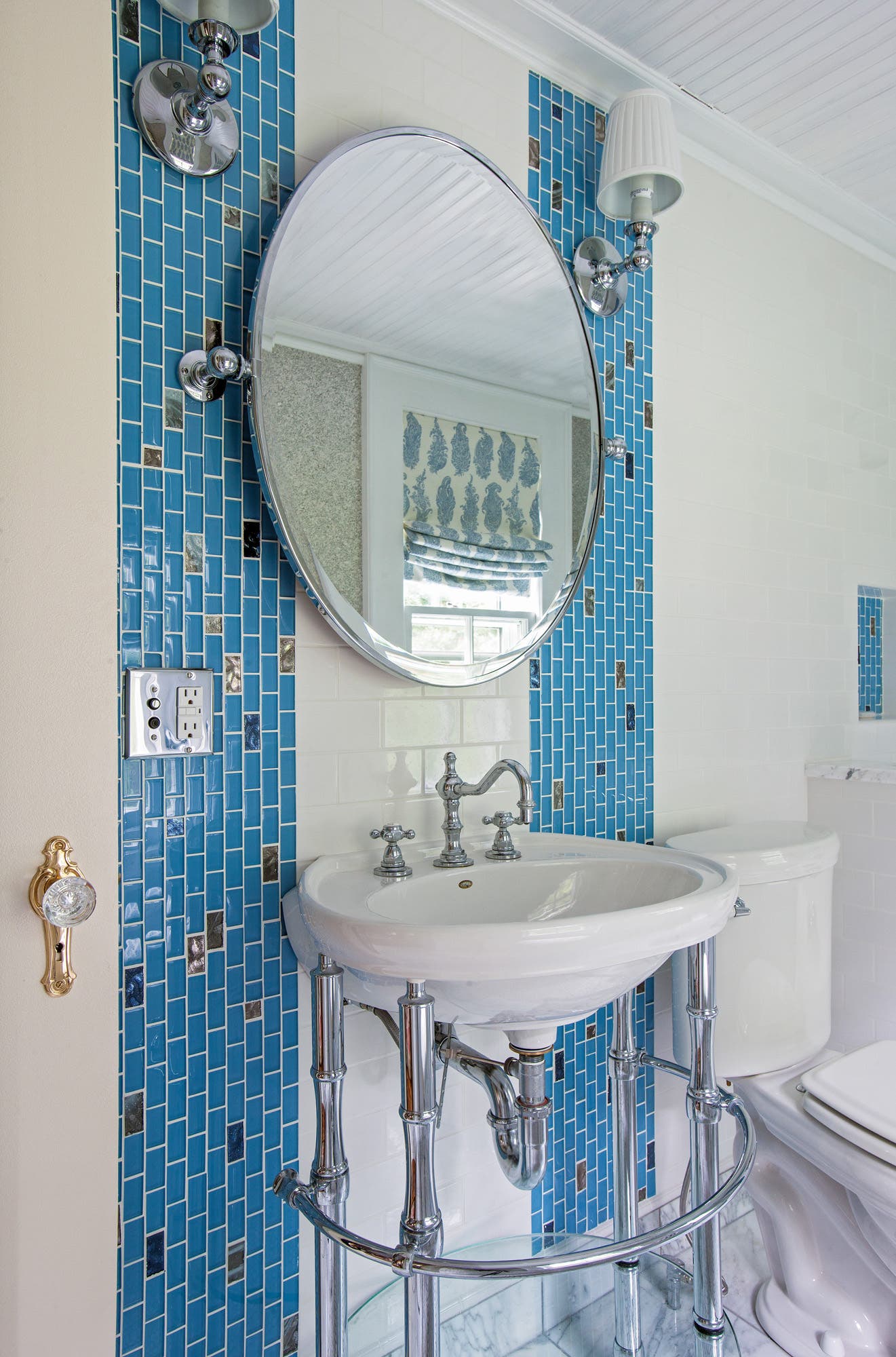
Product Reports
Period-Inspired Plumbing
Photos by Eric Roth
Just over a century ago, bathrooms and kitchens were little more than utilitarian service spaces, devoid of decoration and, more often than not, running water. However, as plumbing snaked its way into houses, it brought along artfully designed faucets and fixtures that soon set in motion the waves of styles that repeatedly washed over bathrooms and, to a lesser extent, kitchens, which can be used as keys to create period-style rooms today.
According to Martin Grubman at P.E.Guerin in New York City, the company has manufactured such a broad range of designs over their 150-plus-year history—everything from ultra-modern to ultra-traditional—that no one period style stands out as being necessarily more in vogue than the others. “However, in our stock line I would say two basin sets that are very popular are our Anniversary Series and our Reed and Bead series,” the former having classic, smooth surfaces, and the latter rich with decorative chasing. He adds that over the last few years their Art Deco styles, such as Greet Deco, have also been pretty popular. “There’s an Edgar Brandt style, too,” he says, referring to the famous French designer and ironworker of the 1930s and ’40s. For perspective, Grubman reminds us that, as ever, styles are cyclical. “I remember in the 1960s, everything was Modern, Modern, Modern. Then in the late 1970s, ’80s, and ’90s, it was all traditional. Then, when the century turned in 2000, Modern started up again.”
At Bathroom Machineries in Murphys, California, John Vienop, too, has seen tastes in period baths ebb and flow. “Victorian isn’t the thing it used to be,” he says. “We’ve definitely moved more into mid-20th century and Art Deco.” The waning of things Victorian, he speculates, is tied as much to hard numbers as tastes. “The houses that were worth saving are probably already saved, and the ones that aren’t worth saving have been bulldozed, so Victorian houses as projects are getting fewer and farther between.” Later houses may be more plentiful or affordable, but Vienop has another take on their appeal. “I think it may be because baby boomers and gen-xers are all trying to re-live a tad of their childhoods in grandma’s house. Well, grandma’s house now is often from the mid-1950s.”
Viewed from another long history and breadth of products lines, Eric Moore at Kohler Co. in Kohler, Wisconsin, says trends do not always jump out either. “Kohler has the portfolio to fit all different genres, from modern to transitional to traditional,” he observes “We also see different sales in different areas of the United States—Modern, say, on the West Coast, while maybe a mix of transitional and traditional in the South.” He adds that since clean-ability is a focus these days, a lot of people want easy-to-clean fixtures, from sinks to toilets to single-handle faucets. “We’re also an international business, and globally you don’t see as much traditional; instead it’s ultra-sleek, Euro-modern type design.”
When Past Faucets Leads to Present
With a history as rich as the faucet industry itself, it’s no surprise that P.E. Guerin can draw on its own original designs for fitting out period bathrooms. “Generally, the fancier bath sets are the oldest,” explains Grubman, “from the turn of the last century and the 1910s and ’20s.” He says these fixtures are typical of what was used in the era, and the original patterns—prototypes for casting produced by P.E. Guerin designers—are still at the company and employed in production today. “A lot of what we call our stock line was created in the mid-century period—the 1940s, ’50s, and ’60s—and we have those patterns too.” The Reed and Bead series along with the Anniversary Series, were created anywhere from the 1950s and ’60s to the ’70s and ’80s.
For fans of traditional design, Moore says Kohler has much to offer, not only in sanitary ware but especially in faucets. “We’ve seen huge growth in our Artifacts line,” he says, which is described as being inspired by turn-of-the-century examples. “I’ve looked at different plumbing history museums and historic examples we have at Kohler and you can see the influence on these faucets—a different look, but connecting with the past.” Indeed, the decoratively turned parts with lever handles and curved spouts all echo the Fuller-ball type faucets that were state of the art in that era. However, unlike faucets a century ago and most today, these are not fixed designs. “With Artifacts, the customer has the opportunity to choose the spout they want—slim, tall column, or bell—and then from among four handle styles.” As Moore explains, “This not only gives buyers the opportunity to customize, but also to have a different faucet in every bathroom, yet still related to each other as part of the Artifacts collection.” The faucet line extends to kitchens as well, with bridge faucets, single control faucets, and pull-down faucets. Other faucet lines that can help with a period bathroom are Antique, a longstanding product line at the company with solid brass construction, Memoirs, and IV Georges Brass.
At P.E. Guerin, too, versatility is stock in trade. “Every one of the basin sets has a tub set and a shower set,” says Grubman, in other words companion fixtures in the same style. “We do everything in all those styles.” On top of this, Grubman says all these faucets can be ordered for kitchens. “You can either have them with a gooseneck spout, a kitchen rinse, or a sprayer.” He adds that while they don’t make single-lever kitchen faucets, they can make the swivel gooseneck to whatever dimensions are desired for height and projection. Plus, being custom manufacturers, “the breadth of choices is literally numbing.”
It’s hard to find a connection to history more direct than at Bathroom Machineries, which has been offering a wide variety of antique and reproduction bathroom fixtures, plus hard-to-find parts for repairs and retrofits, for over two decades. “Probably, about 70 percent of our fixture sales are reproductions and about 30 percent are originals,” estimates Vienop, who says they also do a brisk business supplying parts for 70-year old faucets and the like. “We manufacture old parts that the original manufacturers have ceased to produce,” he says. “For example, Crane—or American Standard who now owns Crane—refers people to us for their old parts. The parts side of the industry doesn’t make sense for them, but it makes sense for us.” He adds that they’re working on bringing out new products all the time.
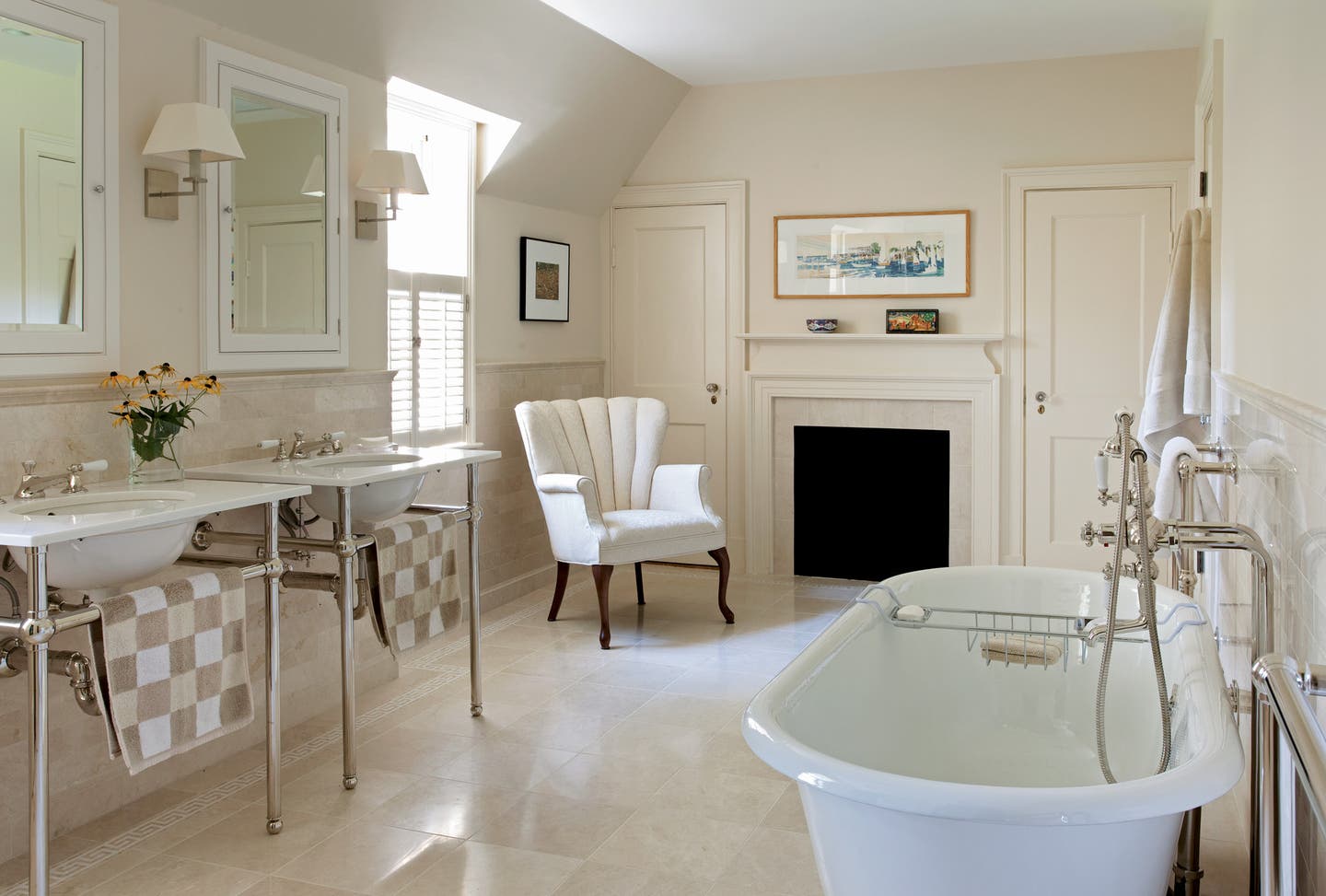
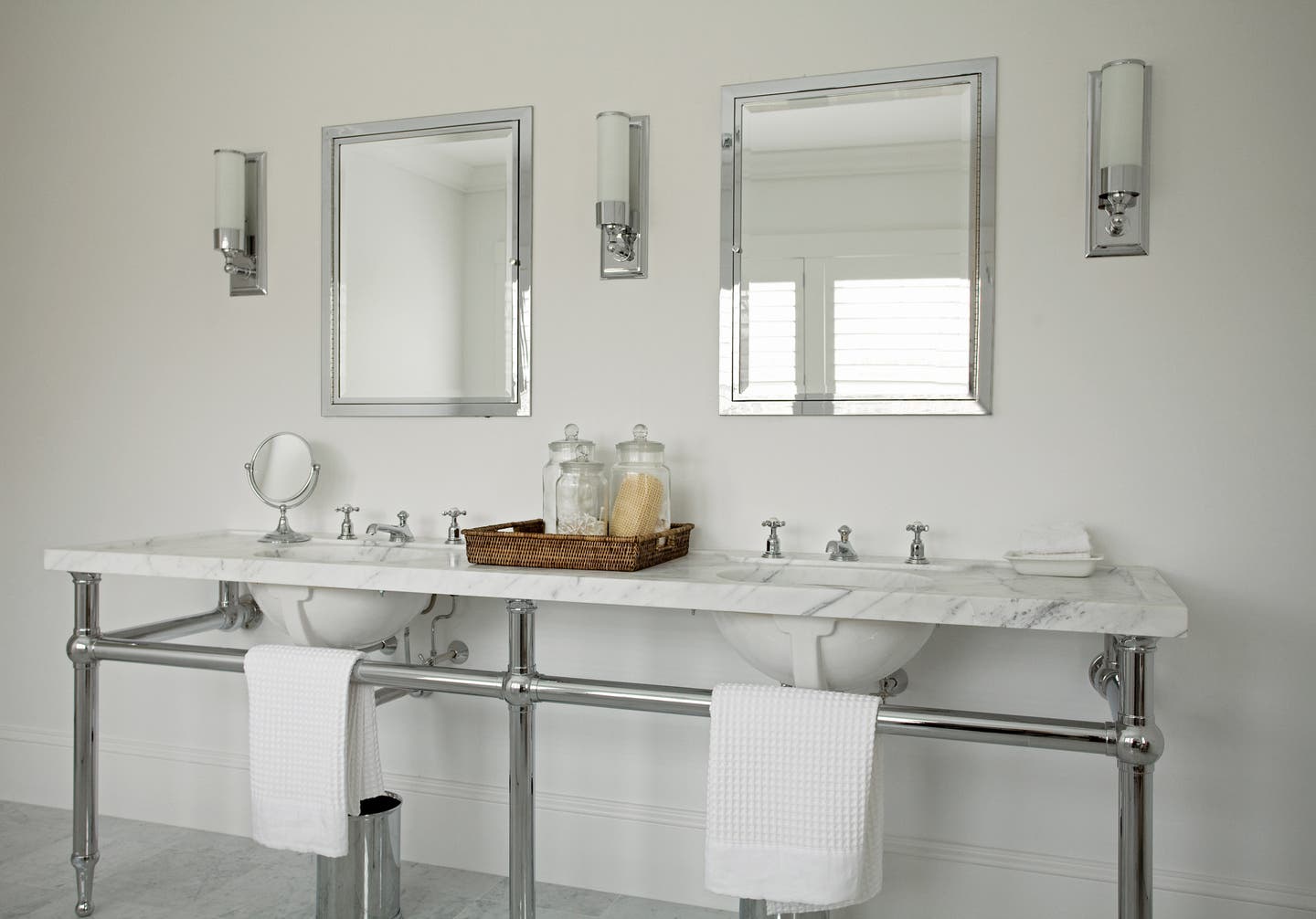
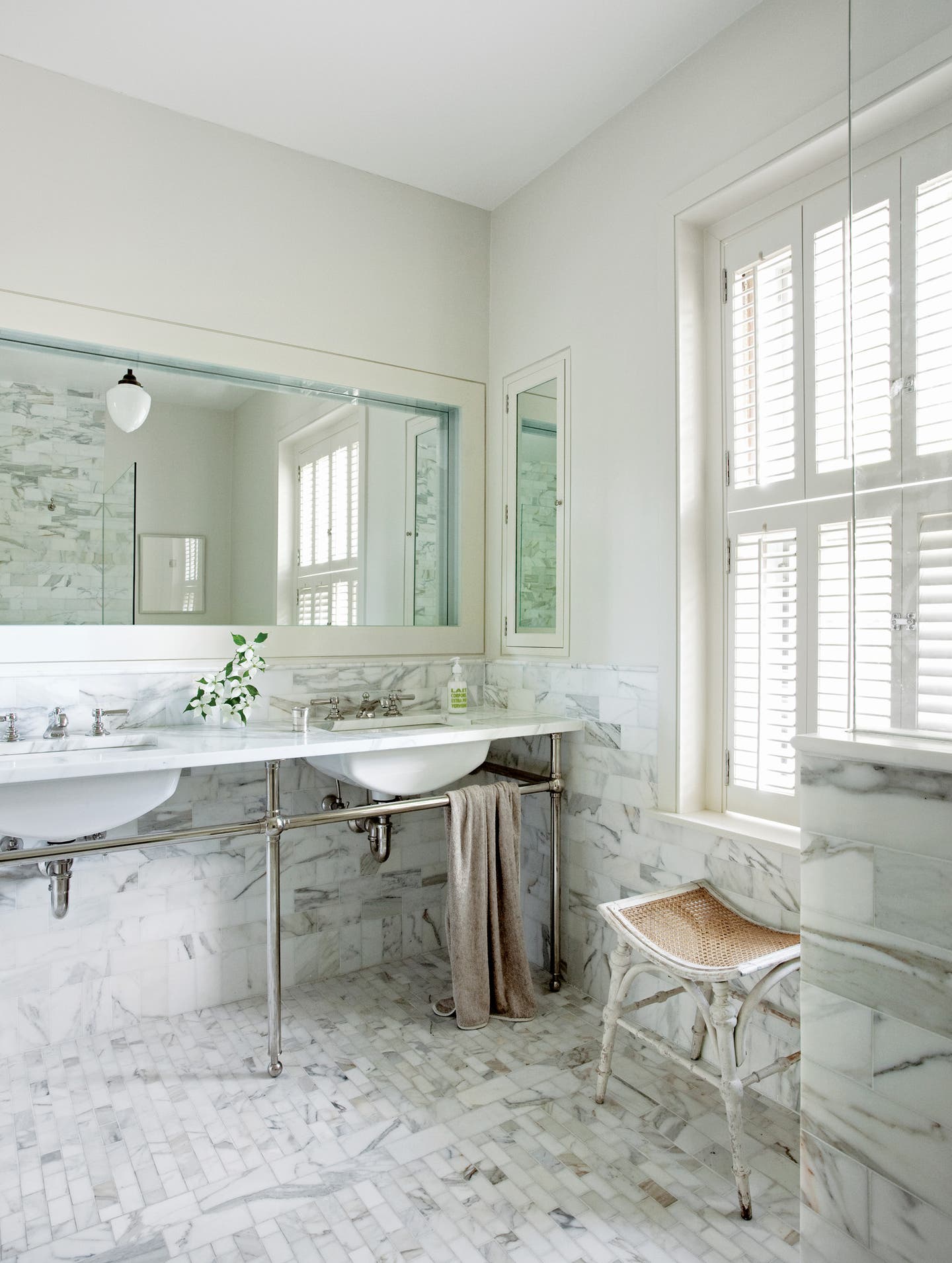
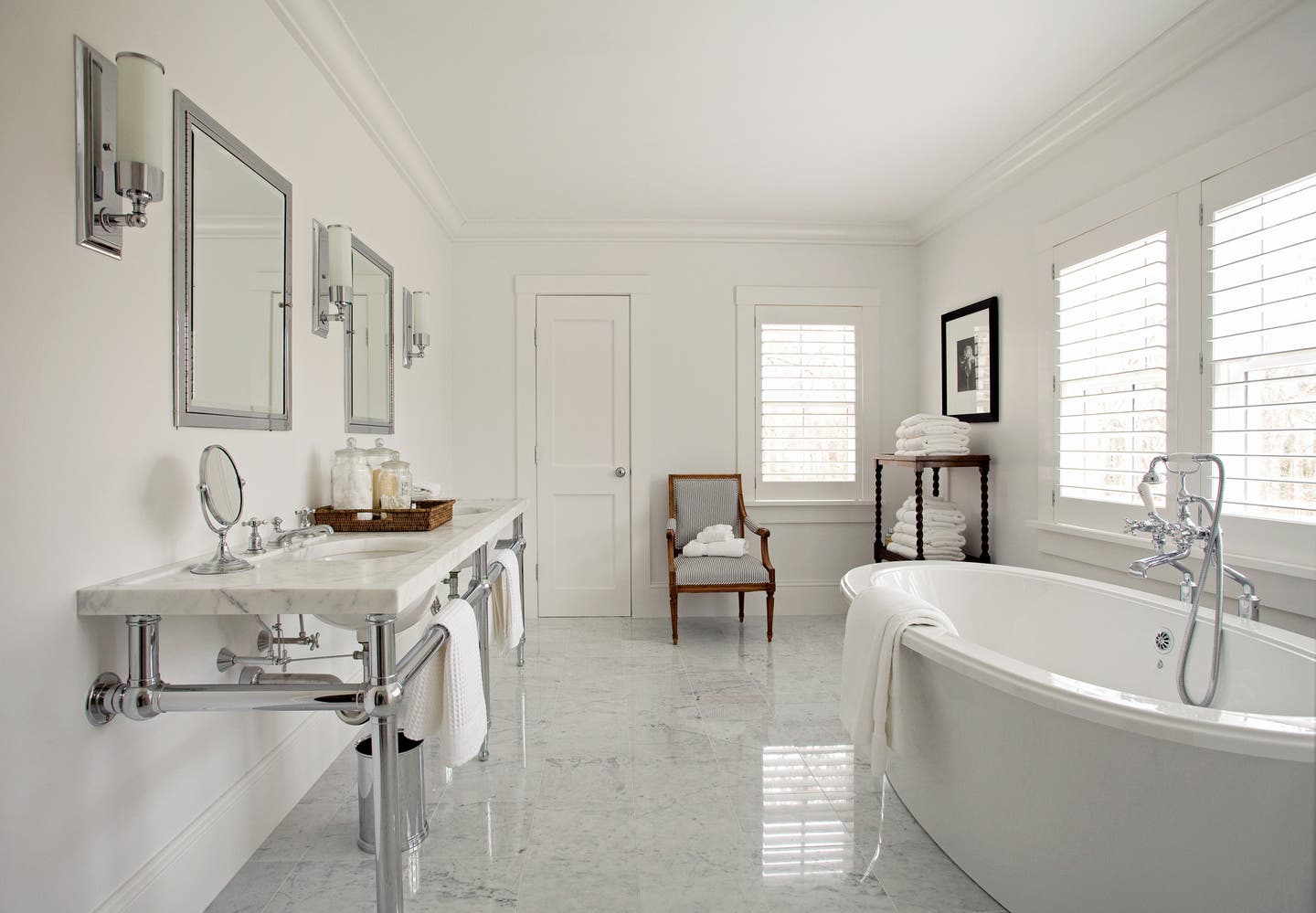
When it comes to period plumbing, bathrooms get most of the attention in Vienop’s market, kitchens often less so. “Our normal client is someone fairly affluent with that 1950s or 1960s ranch that they’re taking back to period.” He says there’s definitely a minor trend towards colored fixtures, which historically burst upon the industry when colored enamels were perfected after 1929. “We’re seeing a lot of popularity in the greens, blues, ‘Mamie pink’ (the fashion started by first lady Mamie Eisenhower), and all the other lovely colors.” He adds that he still has trouble keeping Ming Green fixtures in stock. “It’s probably the most popular of the colors that we see,” he says, “but most people are still after white, which goes with everything.”
Not surprising for a company that was at the advent of vitreous coated iron tubs in 1883, clawfoot bathtubs are alive and well at Kohler—in fact, growing according to Moore. “A few years ago we had just two or three freestanding tubs,” he says, “now we have 17—with five just launched this year.” Part of the expansion comes from redoing the Ironworks Historic line with new offerings, such as a painted black exterior, as well as the development of new, cast resin material that allows for new geometrics, textures, and designs in the tubs. He says clawfoot tubs usually skew towards the traditional client, but they get specified for all kinds of settings. “People really gravitate towards a tub that they can show off as a statement piece, yet also relax in and get away from the busy world.”
For another period bath fixture that combines statement with the sensual, Grubman suggests a toe-tester. Positioned four to six inches off the shower basin, the toe-tester looks like a short tub spout about two inches or three inches long. “With a toe tester, you don’t have to keep reaching into a spraying shower to get the right temperature,” he explains. “Instead, before you divert to the shower head, you put your toe under the tester and adjust the water until you say, ‘Ahhhh, nice!’”
Less Water is More
A powerful influence bubbling up in period bath and kitchen fixtures these days is the water itself—or more rightly its conservation. In the wake of the on-going historic drought, in 2015 the California Energy Commission approved new reduced flow standards for showerheads, lavatory faucets, and other water appliances that is expected to save more than 2.4 billion gallons in the first year and prepare against future droughts. Commonly known as Title 20 (a part of the California Code of Regulations), the new standards mandate that showerheads not exceed 2.0 gallons per minute maximum flow rate (down from 2.5 gallons) and that residential lavatory faucets not exceed 1.2 gallons per minute maximum flow rate by July 1, 2016. The law applies to “all products sold or offered for sale on or after January 1, 2016, regardless of manufacture date.”
When asked if these regulations are having an impact on original period fixtures, such as large, antique, “sunflower” showerheads, Vienop’s immediate, to-the-point answer is, “Can’t sell’em!” Not only are retrofits like restrictors not permitted, the appliance has to be certified it meets Title 20. Trouble is, testing by an independent laboratory is cost-prohibitive for small production runs of new appliances, much less single antiques.
Water restrictions can influence the installation too—not just the faucets/devices themselves. As Grubman explains, customarily many showers would have as many as three volume controls. “Well, in California you’re only allowed to have one device operating at a time. So you end up with a mixing valve and then a diverter to turn on, say, just the shower head or just the body sprays or just the toe tester.” At Kohler, Moore says, “We’ve been creating WaterSense products pretty much since day one,” referring to the high-efficiency, water-consuming appliance partnership program by the U.S Environmental Protection Agency, “and we just launched a toilet that only uses 1.0 gallon per flush.” Since the new regulations are already having a trickle-down effect on codes in states such as Texas and Georgia, it’s clear that as California flows, so will flow the country.
Gordon Bock, co-author of The Vintage House (www.vintagehousebook.com), is an in-demand speaker for courses, seminars, and keynote addresses through www.gordonbock.com.




